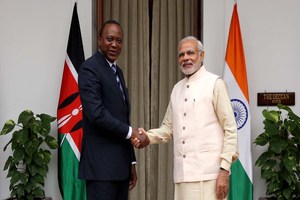India, currently the eighth-largest investor in Africa has shared close relations with the continent for many decades. However, economic relations, particularly Indian investments in the continent were insignificant until the mid-2000s. Many large Indian businesses did invest in East African countries in the 1950s and 60s but the investments were considerably smaller in magnitude as c ompared to current flows. The growth of Indian investments in African countries was the outcome of 2 main developments - firstly, with economic reforms, rules for outward investments were gradually liberalized and it became easier for Indian companies to invest abroad. Secondly, with higher growth rates, India’s energy requirements grew rapidly. Similarly, important changes occurred in Africa. Once described as a ‘hopeless continent’ — Africa entered a phase of high growth in the 2000s. Many African countries emerged as attractive investment destinations on account of high growth, rising middle class, and resource abundance.
The remarkable growth of Indian investments in Africa caught widespread attention. News headlines such as ‘Africa is the next big frontier for Indian companies’, ‘A marriage made in heaven? Indian companies in Africa’, and ‘India’s investment in Africa: Feeding up an ambitious elephant’ became quite common.
Indian investments in Africa are highly concentrated geographically. With a share of 63 per cent and 22 per cent, East and North African regions attract most of the investments from India. The top ten recipients account for over 90 per cent of Indian FDI flows to Africa. With a share of about 52.9 per cent, Mozambique tops the list. But its top position is largely due to ONGC Videsh’s investment in the Rovuma gas field, which accounts for about 99 per cent of Indian investments in Mozambique. Thirdly, Indian outward investment in Africa is concentrated within a few large firms. Although about 597 Indian companies invested in Africa over 2008-16, the top eleven companies account for about 80 per cent of the total Indian investment flows. With investments worth $3.02 billion, ONGC Videsh tops the list, followed by Gujarat State Petroleum Corporation, Interlabels Industries, Oil India, and Coromandel International. Moreover, these large Indian firms have not expanded their presence across the continent and their investments are concentrated in only a few countries. With the exception of ONGC Videsh, which has investments in six African countries — Congo, Egypt, Ivory Coast, Libya, Mozambique, and Sudan — all major Indian companies have established their presence in only one or two African countries.
Indian investments in Africa are typically characterised by large-scale investments in oil, gas, and mining sectors by public sector enterprises. But India’s public sector companies have not fared very well in Africa’s energy market. In many instances, they have had to relinquish the blocks they acquired due to poor commercial prospects, inability to meet contractual agreements or because the blocks were still in their exploratory phase. On the other hand, although the private sector’s footprint has grown, its footprint is smaller than India’s public sector but definitely on the rise.
In a nutshell, infrastructure, construction and energy are the critical pull factors behind the growth of Indian investments in Africa and the private sector is yet to fully exploit the opportunities that Africa presents.












Add Comment